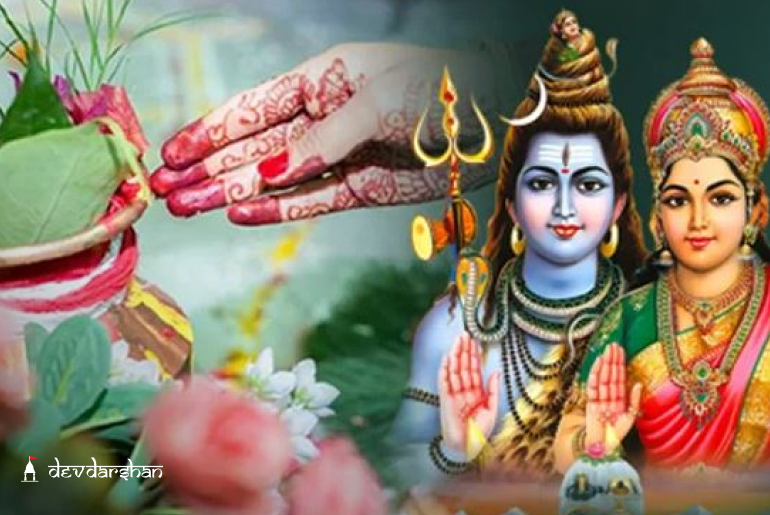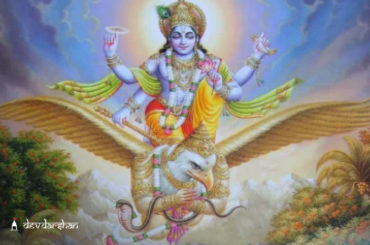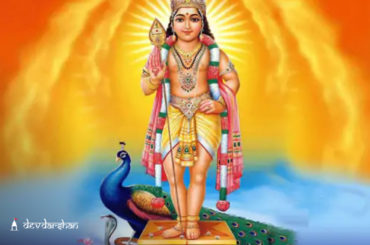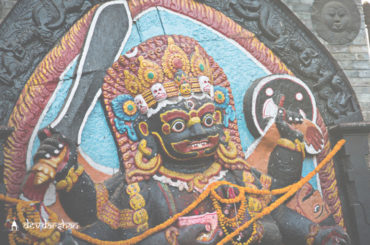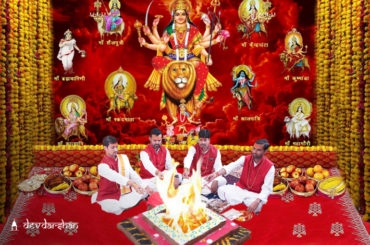Kajari Teej is the most important festival celebrated by women in India to strengthen their marital bonds and seek blessings from Maa Parvati. It takes place on the third day of the Krishna Paksha (dark fortnight) in the lunar month of Bhadrapada. This year, Kajari Teej will be observed on September 2, 2023, which falls on a Saturday. It is also known as Budhi Teej and Satodi Teej in certain regions, primarily Rajasthan, Uttar Pradesh, Madhya Pradesh, and Bihar. Similar to Hariyali Teej and Hartalika Teej, Kajari Teej holds great importance for married women in Hindu culture. This auspicious day typically occurs three days after Raksha Bandhan and five days before Krishna Janamashtmi. Let’s explore further to gain a deeper understanding of this Hindu festival.
Also, Find the Importance of Raksha Bandhan
Teej Festivals 2023
Teej festivity is especially observed by women in North Indian states, especially in Rajasthan, Uttar Pradesh, Madhya Pradesh and Bihar with a lot of fun. Three famous Teej(s) which are celebrated by women during Sawan and Bhadrapada months are as follows:
- Hariyali Teej
- Kajari Teej
- Hartalika Teej
So, let’s get to know more about the Date, Rituals and Significance of Kajari Teej 2023.
Kajari Teej 2023: Date, Muhurat and Timings
This year, Hariyali Teej will be observed on Saturday, September 2, 2023
- Tritiya Tithi Starts: 11:50 p.m on September 01, 2023
- Tritiya Tithi Ends: 08:49 p.m on September 02, 2023
Find Out Date and Muhurat of Sawan Month 2023
Significance of Kajari Teej 2023
Kajari Teej is observed to joyfully welcome the monsoon season following a harsh summer. It is one of the three Teej festivals celebrated during the year, alongside Akha Teej and Hariyali Teej. Devotees prepare diligently for this special occasion.
On Kajari Teej, it is considered auspicious to worship Goddess Parvati. Women who offer their prayers to Goddess Parvati on this day are believed to be blessed with a harmonious and dignified relationship with their husbands. According to legend, Goddess Parvati went through 108 births to finally marry Lord Shiva. This day is also celebrated as a tribute to the selfless love that Goddess Parvati displayed for Lord Shiva. It was her unwavering devotion that ultimately led Lord Shiva to accept her as his wife.
Kajari Teej holds great significance in Hindu culture, particularly for married women. The festival carries several symbolic and traditional meanings.
Strengthening Marital Bonds
Kajari Teej is observed by married women to strengthen their marital bonds and seek the blessings of Maa Parvati, who is considered the epitome of a devoted wife.
Praying for the Well-Being of the Spouse
Women offer prayers to Maa Parvati and seek her blessings for the well-being, longevity, and prosperity of their husbands.
Seasonal Celebration
Kajari Teej marks the arrival of the monsoon season, specifically the period of the year when the Kajari trees bear fruit. It is celebrated as a joyous occasion to welcome abundance and fertility.
Women’s Unity and Sisterhood
During this festival, women come together to celebrate and participate in various rituals, dances, and songs. It promotes unity and strengthens the bond of sisterhood among women.
Rituals and Fasting
Women observe fasting on Kajari Teej and refrain from consuming food and water until they perform the evening prayers. This act of fasting is believed to bring good luck and marital bliss.
Traditional Customs
Married women dress up in vibrant traditional attire, adorn themselves with jewellery, apply henna on their hands, and participate in cultural activities, including singing and dancing.
Cultural Significance
Kajari Teej is deeply rooted in the cultural fabric of North Indian states like Rajasthan, Uttar Pradesh, Madhya Pradesh, and Bihar. It represents the rich heritage and traditions of these regions.
Overall, Kajari Teej is an important festival that celebrates love, devotion, fertility, and the bond between married couples. It is an occasion for women to come together, express their faith, and seek blessings for a harmonious and prosperous married life.
Find out how to perform Maa Gauri Vrat Puja
Kajari Teej 2023 Rituals
The festival is celebrated with great fun and frolic by women. While it is a bit different in every region, the basic rituals which are followed remain the same.
The customs and rituals associated with Kajari Teej are as follows:
- Married women observe a fast on Kajari Teej to pray for the well-being and long life of their husbands. Unmarried girls also observe this fast with the hope of finding a suitable life partner.
- On Kajari Teej, a variety of dishes are prepared using ingredients like barley, wheat, gram, and rice mixture known as sattu. The fast is concluded when the observer spots the moon.
- Paying reverence to cows is an important aspect of Kajari Teej. Women offer small chapatis made of wheat flour, coated with jaggery and ghee, to the holy cows before consuming the food themselves.
- Women celebrate the day by embellishing their homes with beautifully decorated swings. They engage in lively folk dances while singing traditional songs, immersing themselves in the festive spirit.
- A significant highlight of the day is the singing of Kajari Teej songs. In Uttar Pradesh and Bihar, people sing melodious Kajari songs accompanied by the rhythmic beats of drums, creating a vibrant atmosphere.
These rituals and practices bring people together, fostering a sense of devotion, joy, and cultural celebration during Kajari Teej.
Kajari Teej Vrat Katha
The vrat katha (sacred story) associated with Kajari Teej revolves around the devotion of a young woman named Kajari. The story goes as follows:
Once, in a village, there lived a girl named Kajari who was known for her unwavering devotion to Lord Shiva and Goddess Parvati. Kajari was deeply in love with a man and aspired to marry him. However, due to various circumstances, they were unable to be together.
Driven by her love and determination, Kajari decided to observe a stringent fast on the day of Kajari Teej to seek the blessings of Goddess Parvati. She prayed with utmost devotion, asking the goddess to bless her with a loving and prosperous marital life.
Impressed by Kajari’s sincere devotion and her selfless love, Goddess Parvati appeared before her. The goddess was pleased with Kajari’s dedication and granted her the boon of a harmonious and fulfilling married life. Kajari’s prayers were answered, and she soon got married to the man she loved.
The vrat katha of Kajari Teej highlights the significance of devotion, determination, and faith. It emphasizes the belief that sincere devotion and unwavering love can overcome obstacles and lead to the fulfilment of desires. It serves as an inspiration for women observing the fast on Kajari Teej, encouraging them to seek the blessings of Goddess Parvati for a blissful and prosperous married life.
The vrat katha varies from region to region. Here is the most common vrat katha that exists in most regions.
Check out various Online Puja and services provided by DevDarshan here and get your bookings done in one click. If you want to know more about Indian culture, Indian Temples, Pujas and festivals, then download the DevDarshan App. Don’t forget to share this blog if you liked.

